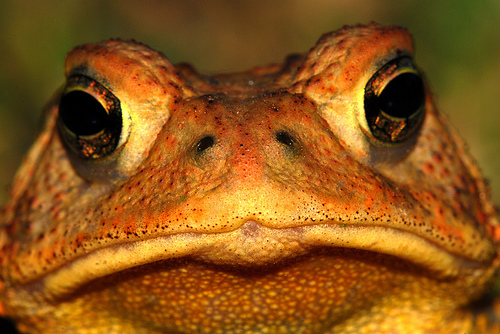Climate Change and Amphibians
 Researchers in America have been looking into the effects of climate change on fifteen amphibian species.
Researchers in America have been looking into the effects of climate change on fifteen amphibian species.
Climate change predictions across the world suggest that temperatures will go hot and cold for some time, but ultimately the planet is becoming warmer. Frogs, newts and toads are particularly vulnerable to such changes in temperature and need very specific habitats to survive. Sometimes they need particular plants around them to eat or use to make nests, or their eggs will only develop in certain temperatures.
There can be many factors that make up an animals ideal living conditions. If, for example, temperatures rise and a species cannot survive, they will begin searching for cooler areas, but if the temperatures drop back they will return to their original homes - only to have to move again when the heat kicks in. In this way they may never find a better habitat and become extinct. Whether a species can survive changes in the climate depends on how strong they are and whether they can make it to more suitable habitats in time and continue to lay eggs or give birth to young.
An example of a toad species being affected by climate change is the story of the Golden Toad, which could be found in only one place in the whole world - Costa Rica. Golden toads flourished in a type of forest that is known as a cloud forest because of the mists and cloud that hang low in the sky providing moisture for the trees and animals. Only discovered by humans in 1966, in 1987 scientists counted thousands of golden toads. When they went back in 1988 they found ten, and in 1989 only one could be seen anywhere and they are now classified as extinct. So the population disappeared rapidly from several thousand to zero in just three years - why? A weather phenomenon known as ‘El Nino‘ made conditions warmer and much dryer and the frogs could not survive. It is also believed that this change in conditions allowed a deadly disease known to affect 43% of amphibian species to spread and wipe-out all golden toads.
Out of the fifteen species of amphibians studied by the American researchers they predicted that over half of them could become extinct in the next one hundred years due to climate change. This is a worrying sign and could signal trouble ahead for an estimated 15-37% of all species on earth. One solution that is being considered is that we step in and move threatened animals to better areas ourselves before it is too late. But some suggest that the effects of introducing a species to a new area is unknown and could cause problems.
Read More: A Shrinking Feeling